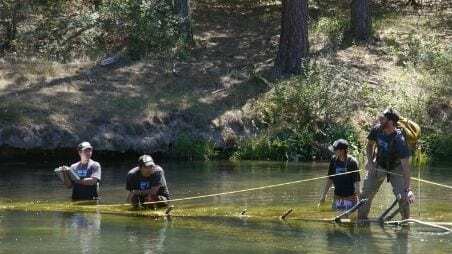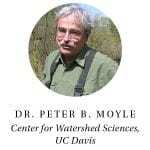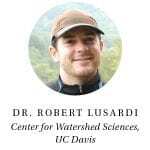In early 80s, little fingers of gray sand began to appear at the top of the stretch of Hat Creek that CalTrout restored 50 years prior, by the Powerhouse 2 riffle. As the years progressed, the volcanic sediment continued to amass while moving downstream. In just a few short years, weed beds were buried under the sediment, thus compromising bug habitat. Meanwhile, riverbanks were being eroded by anglers and hikers attracted to Hat Creek’s fishery and natural beauty.
By 2011, the fish population was down to fewer than 1,000 fish per mile. Hat Creek was clearly in decline, tourists stayed away, and the local economy suffered with it. So CalTrout stepped in again. This time, bringing decades of experience and the scope of vision that comes with it.
In this multi-year project that kicked off in 2012, invasive noxious weeds were removed from the river. Helicopters delivered large woody debris into the river to create habitat structure for bugs and fish. More than 5,000 riparian plants were brought in to stabilize the crumbling banks. A new pedestrian bridge was built to decrease erosion effects. As a result, dynamic features, the flushing of sediment, and a richer bug life together create a healthier river.
But perhaps most importantly, this latest iteration on Hat Creek was focused not only on restoration and recreation, but also on protecting cultural resources of the Illmawi Band of the Pit River Tribe, for whom Hat Creek is their ancestral land. When the fishing declined and anglers gave way to people drinking and shooting guns on the river banks, the Illmawi were dismayed by the disrespect shown to the land that includes their native burial grounds. They, too, had an interest in returning Hat Creek to a healthy and respected fishery.
The Lomakatsi Restoration Project—a program that trains tribal work forces to restore native lands—created the Hat Creek Youth Initiative to provide Pit River tribal youth with jobs, training and mentorship with natural resource professionals. Clearwater Lodge owner Michelle Titus also got involved, providing native youth with a fully guided fly fishing experience to encourage their participation and hopefully spark interest among any potential future fishing guides.
The result was a community partnership that grew out of a fateful moment fifty years ago.
 #1 in our 50th Anniversary Series
#1 in our 50th Anniversary Series





